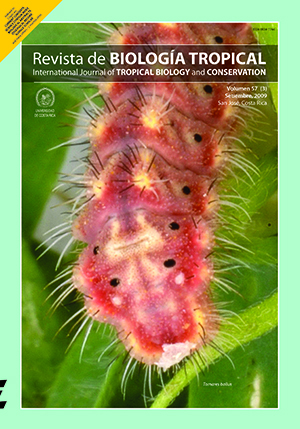Abstract
We characterized soil chemical and physical properties in eight tropical dry forest (TDF) successional sites along a time sequence (10, 15, 20, 40, 60 and >100 years) in Santa Rosa, Costa Rica. Seventeen soils were identified, described, and classified in six orders. Most soils were classified as Entisols and Vertisols, but Mollisols, Alfisols, Inceptisols and Ultisols were also present. All soils showed good fertility that did not constrain species richness. High edaphic variation seemed the result of complex interactions among the pyroclastic origin of Santa Rosa ignimbritic plateau (SRIP), the lithological composition and acidity of ignimbritic rocks, the strong seasonality in rainfall, intense hydric and aeolic erosion, topographic variations within the SRIP, and past human intervention. Correlations performed on soils classified as Entisols (<60 cm deep) showed a depletion of soil cations (Ca, Mg, K, Na and CEC) during the first 20 years of forest regenera-tion, that later recovered in mature TDF sites. Organic matter content did not change significantly along the TDF chrono-sequence. Substantial increments in macro-pores and soil hydraulic conductivity were observed, probably resulting from higher root biomass and turnover in older successional sites. Soil available water and meso-pore abundance were negatively correlated with TDF successional age. Our results indicate that edaphic chan ges observed along TDF regeneration might have been due to annual fires in pastures and young TDF sites, addition of decaying litter and fine roots as regeneration progressed, milder microclimate conditions during late regeneration in mature TDF sites, increased nutrient cycling, and the predominance of sandy loam textures among the soils examined. These changes in the soil environment with succession may have physiological and phenological consequences on the species appearing at different stages of TDF regeneration
Comments

This work is licensed under a Creative Commons Attribution 4.0 International License.
Copyright (c) 2009 Revista de Biología Tropical






